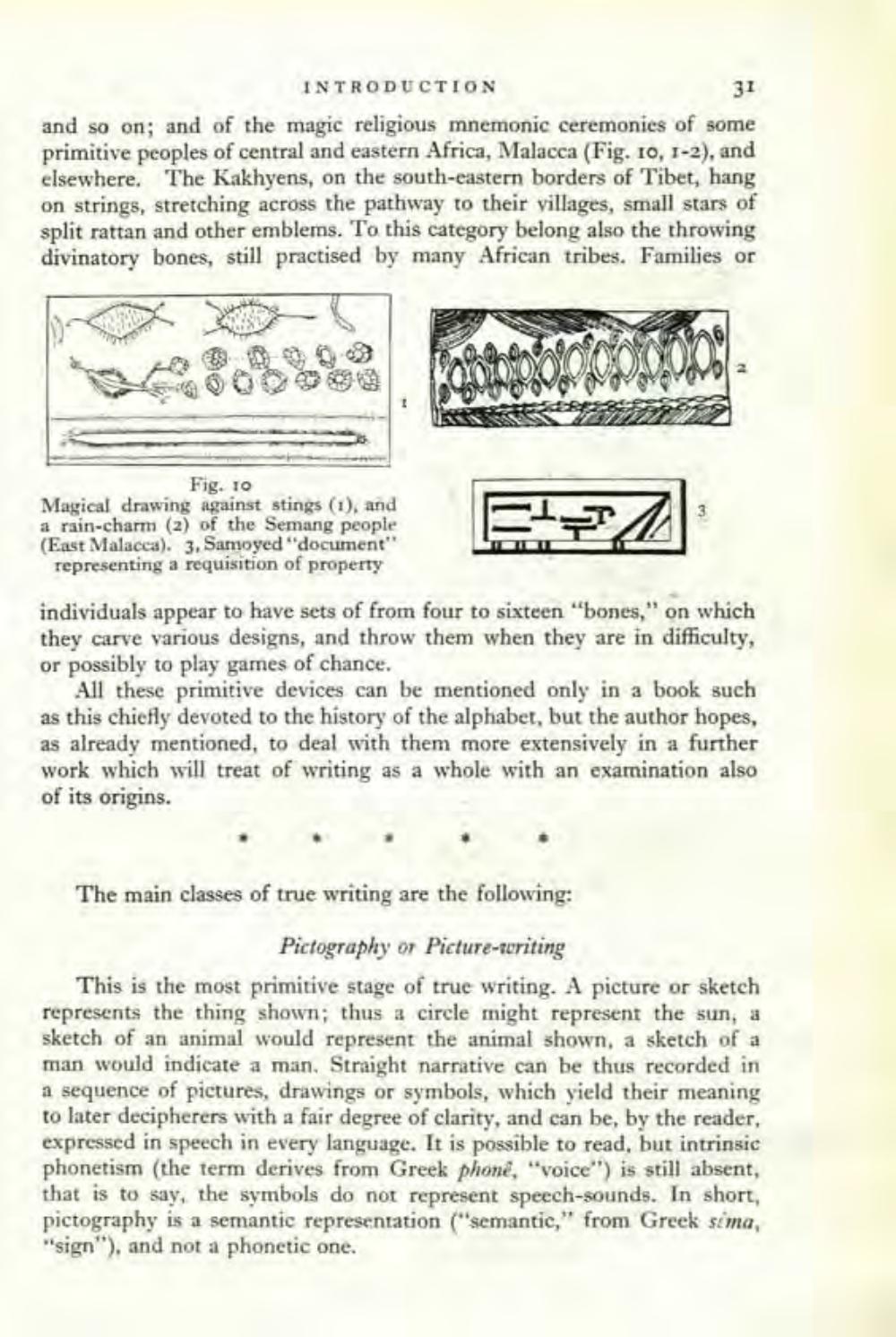________________
INTRODUCTION
31 and so on; and of the magic religious mnemonic ceremonies of some primitive peoples of central and eastern Africa, Malacca (Fig. 10, 1-2), and elsewhere. The Kakhyens, on the south-eastern borders of Tibet, on strings, stretching across the pathway to their villages, small stars of split rattan and other emblems. To this category belong also the throwing divinatory bones, still practised by many African tribes. Families or
O navoro
Fig. 10 Magical drawing against stings (1), and a rsin-charm (2) of the Semang people (East Malacca). 3. Samoyed "document" representing a requisition of property
individuals appear to have sets of from four to sixteen "bones," on which they carve various designs, and throw them when they are in difficulty, or possibly to play games of chance.
All these primitive devices can be mentioned only in a book such as this chiefly devoted to the history of the alphabet, but the author hopes, as already mentioned, to deal with them more extensively in a further work which will treat of writing as a whole with an examination also of its origins.
The main classes of true writing are the following:
Pictography or Picture-toriting This is the most primitive stage of true writing. A picture or sketch represents the thing shown; thus a circle might represent the sun, a sketch of an animal would represent the animal shown, a sketch of a man would indicate a man. Straight narrative can be thus recorded in a sequence of pictures, drawings or symbols, which yield their meaning to later decipherers with a fair degree of clarity, and can be, by the reader, expressed in speech in every language. It is possible to read, but intrinsic phonetism (the term derives from Greek phone, "voice") is still absent, that is to say, the symbols do not represent speech-sounds. In short, pictography is a semantic representation (semantic," from Greek sima, "sign"), and not a phonetic one.




